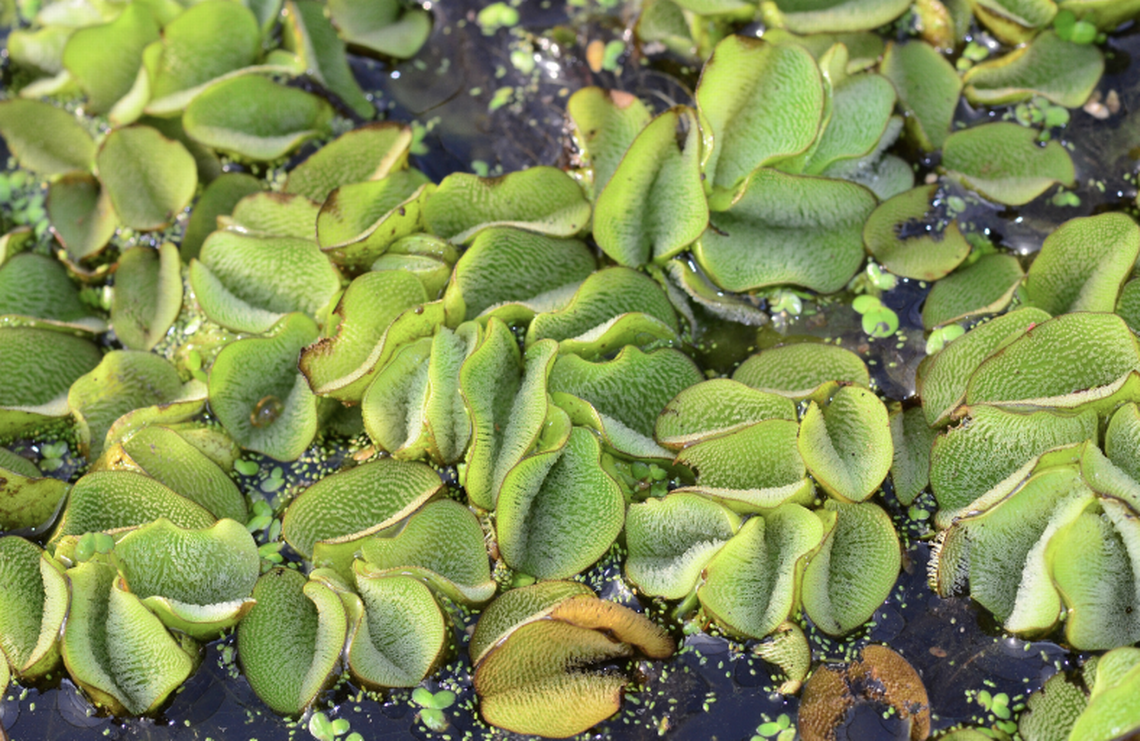Coined the ‘Green Monster,’ this invasive plant is ruining SC lakes. Here’s what to know

As if hydrilla — the plant considered kudzu of the water — wasn’t bad enough, now comes giant salvinia, which has been discovered in Lake Marion and biologists fear it’s making its way downstream into the Cooper and Santee rivers.
It’s a water fern native to Brazil that sits on the surface of the water.
Its scientific name says it all — salvinia molesta.
It was first found in the United States in a small, private pond in South Carolina in 1995. But herbicides quickly killed it.
Then somehow it appeared in Houston and then the Toledo Bend Reservoir, Texas’ largest water body. Before long it was in California, Arizona, Louisiana, Mississippi, Alabama, Georgia, and Florida..
And it has reappeared in South Carolina, first seen in 2017, in the northern tip of Lake Marion and quickly spreading south into Lake Moultrie.
Last fall, a consortium consisting of South Carolina Department of Natural Resources, South Carolina Waterfowl Association, Ducks Unlimited, and Santee Cooper flew helicopter missions over about 500 acres of Lake Marion dumping herbicides. Their efforts continue.
Lake Marion, South Carolina’s largest lake and Moultrie were built in the late 1930s and early 1940s for power generation in what was called the Santee Cooper’s Hydroelectric and Navigation Project.
Like many plants that invade water bodies in the United States, giant salvinia was used as ornamental plants for aquariums. Once established in a lake, it latched onto boats and fishing gear and the rest is history.
It resembles a mat — two Louisiana scientists call it the green monster — and left undisturbed it can become as thick as 3 feet. It grows so fast in ideal conditions, it can cover 40 acres in three months. It’s hard to kill. Cold weather stops its growth but when it warms up, look out, it’s on the move again.
The plant reduces water flow, degrades water quality and affects native fish, the SC DNR states. Salvinia lowers “light and oxygen levels, which creates a stagnant, dark environment that negatively affects freshwater fish and submerged aquatic plants,” DNR says.
It’s also illegal — both by federal and state law — to intentionally put this weed or any other invasive plant — in public waters.
“We need your help to stop its spread,” DNR says on its website.
DNR states:
Don’t dump plants from water gardens or aquariums into public waters, private ponds or ditches.
Remove mud, plants, fish or animals before transporting boats and trailers.
Clean anything that comes in contact with water, including dogs.
Never release plants, fish or animals into a body of water unless they came out of that body of water.
DNR description of giant salvinia
Stems have “floating leaves in pairs at each joint with a third modified leaf that resembles and functions like roots dangling below the water surface. Floating leaves are light to medium green, nearly round, and 1.5 to 1-inch long and wide. The upper surface is covered with dense, tiff white hairs with distinct ‘egg beater’ or ‘bird cage’ shaped tips.
If you see it in any public water in the state, here’s what to do: call the SCDNR Aquatic Nuisance Species Program at 803-755-2872. They’ll also want to see a photo.

